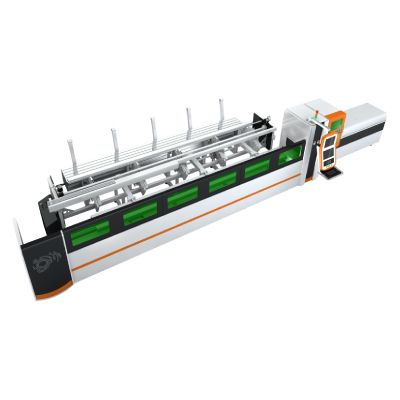In the realm of advanced manufacturing, carbon fiber has emerged as a transformative material highly favored in industries such as aerospace, automotive, and sports equipment. Its lightweight yet incredibly strong properties make carbon fiber ideal for applications where performance and durability are paramount. To harness the full potential of this cutting-edge material, Carbon Fiber CNC Cutting has become a crucial technique in manufacturing processes. This article delves into the advantages of carbon fiber, the intricacies of CNC cutting, and how these technologies are revolutionizing various sectors.
Understanding Carbon Fiber
Carbon fiber is a polymer that consists of thin strands of carbon atoms woven together to form a composite material. This composite is known for its high tensile strength and low weight, making it an excellent alternative to metals like aluminum and steel in many applications. The unique properties of carbon fiber include resistance to corrosion, fatigue, and thermal expansion, all of which enhance its performance in demanding environments.
The Role of CNC Cutting in Carbon Fiber Machining
CNC (Computer Numerical Control) cutting refers to the automated process of using computers to control machine tools. This technology has been widely adopted in various manufacturing sectors due to its precision, efficiency, and ability to produce complex geometries. In the context of carbon fiber, CNC cutting provides several advantages:
1. **Precision Engineering**: One of the primary benefits of CNC cutting is its ability to deliver high precision. Carbon fiber components often need to be cut and shaped to exact specifications, especially in industries like aerospace and automotive, where tolerances can significantly impact performance and safety.
2. **Complex Shapes**: CNC machines can execute intricate designs that would be challenging or impossible to achieve through traditional cutting methods. This capability allows manufacturers to create unique components tailored to specific applications, optimizing aerodynamic and structural performances.
3. **Efficiency and Speed**: CNC cutting speeds up the production process considerably. Manufacturers can produce parts quickly and consistently, reducing lead times and allowing for rapid prototyping and production scalability.
4. **Reduced Waste**: With precise cutting patterns, CNC machines minimize material wastage. This is particularly important in carbon fiber applications, where the raw material can be expensive.
Techniques Involved in Carbon Fiber CNC Cutting
The process of carbon fiber CNC cutting typically involves several key steps:

Exploring the Advantages and Techniques of Carbon Fiber CNC Cutting in Modern Manufacturing Processes
1. **Design and Prototyping**: The journey begins with computer-aided design (CAD) software, where engineers create detailed models of the components. This step is critical for ensuring that the specifications are met before any cutting takes place.
2. **Tool Selection**: Choosing the right cutting tools is vital. Generally, diamond-coated or carbide tools are used for cutting carbon fiber due to their durability and ability to maintain sharp edges.
3. **Machining Process**: CNC machines are then programmed to execute the cutting based on the CAD design. Advanced CNC machines can incorporate various techniques, including milling, routing, and laser cutting, each suited to different requirements and designs.
4. **Finishing**: After cutting, parts may require additional finishing processes to smooth edges, remove excess resin, or apply surface coatings for enhanced durability and aesthetics.
Industry Applications of Carbon Fiber CNC Cutting
The versatility of carbon fiber CNC cutting enables its application in numerous fields:

Exploring the Advantages and Techniques of Carbon Fiber CNC Cutting in Modern Manufacturing Processes
– **Aerospace**: Aircraft components made from carbon fiber are significantly lighter, improving fuel efficiency and performance. CNC cutting ensures the exacting standards required for aerospace manufacturing.
– **Automotive**: Carbon fiber parts, such as body panels and structural components, benefit from reduced weight without sacrificing strength, contributing to better fuel economy and enhanced performance in sports cars.

Exploring the Advantages and Techniques of Carbon Fiber CNC Cutting in Modern Manufacturing Processes
– **Sports Equipment**: High-end bike frames, golf clubs, and other sports equipment utilize carbon fiber for optimal performance. CNC cutting allows manufacturers to craft intricate designs that enhance usability and performance.
– **Medical Devices**: The lightweight and strong properties of carbon fiber make it suitable for medical applications, including prosthetics and surgical equipment. Precision CNC cutting ensures that components meet rigorous specifications.
Conclusion
In conclusion, Carbon Fiber CNC Cutting is a vital process that significantly enhances modern manufacturing capabilities. As industries continue to pursue lighter, stronger, and more efficient materials, the role of CNC technology in shaping carbon fiber components will only grow. With its myriad advantages, including precision, speed, and reduced waste, CNC cutting paves the way for innovative applications across various sectors. As technology advances, we can expect to see even more remarkable developments in the use of carbon fiber, further driving progress in manufacturing and engineering. Precision Laser Cutting Machine



